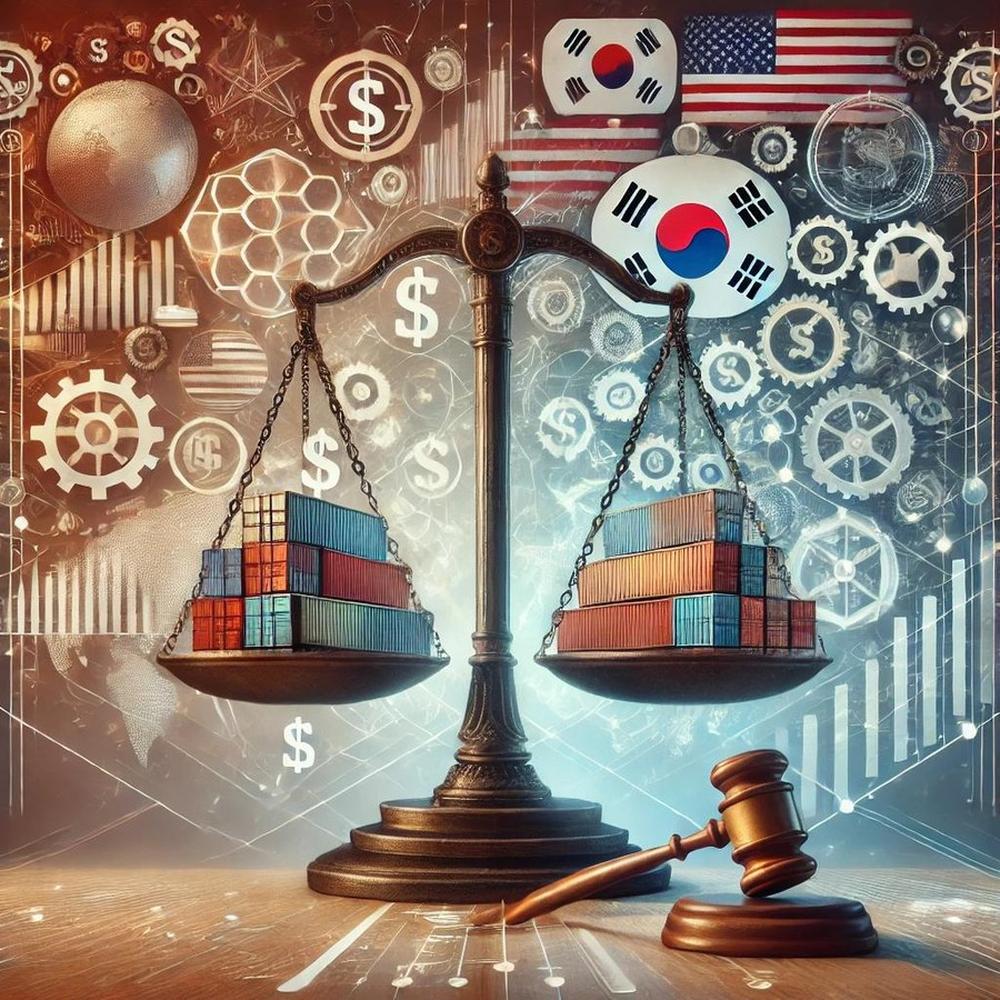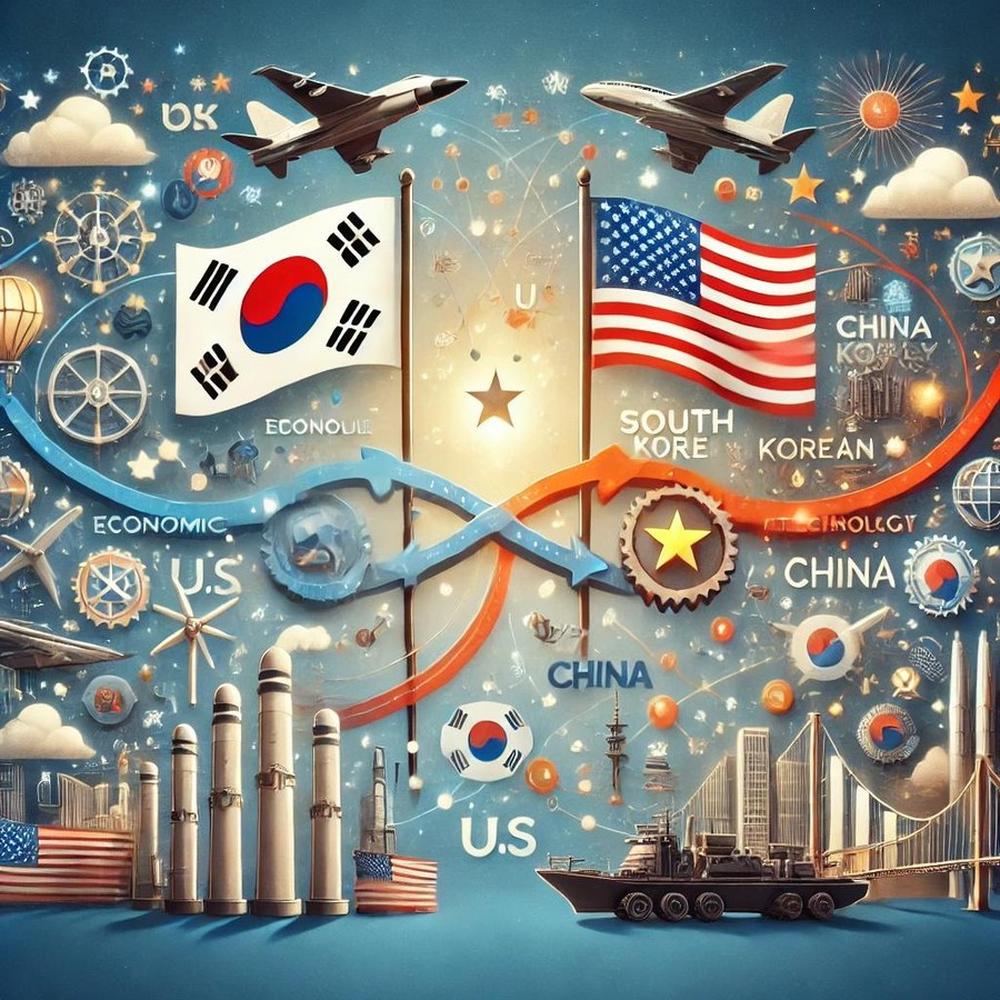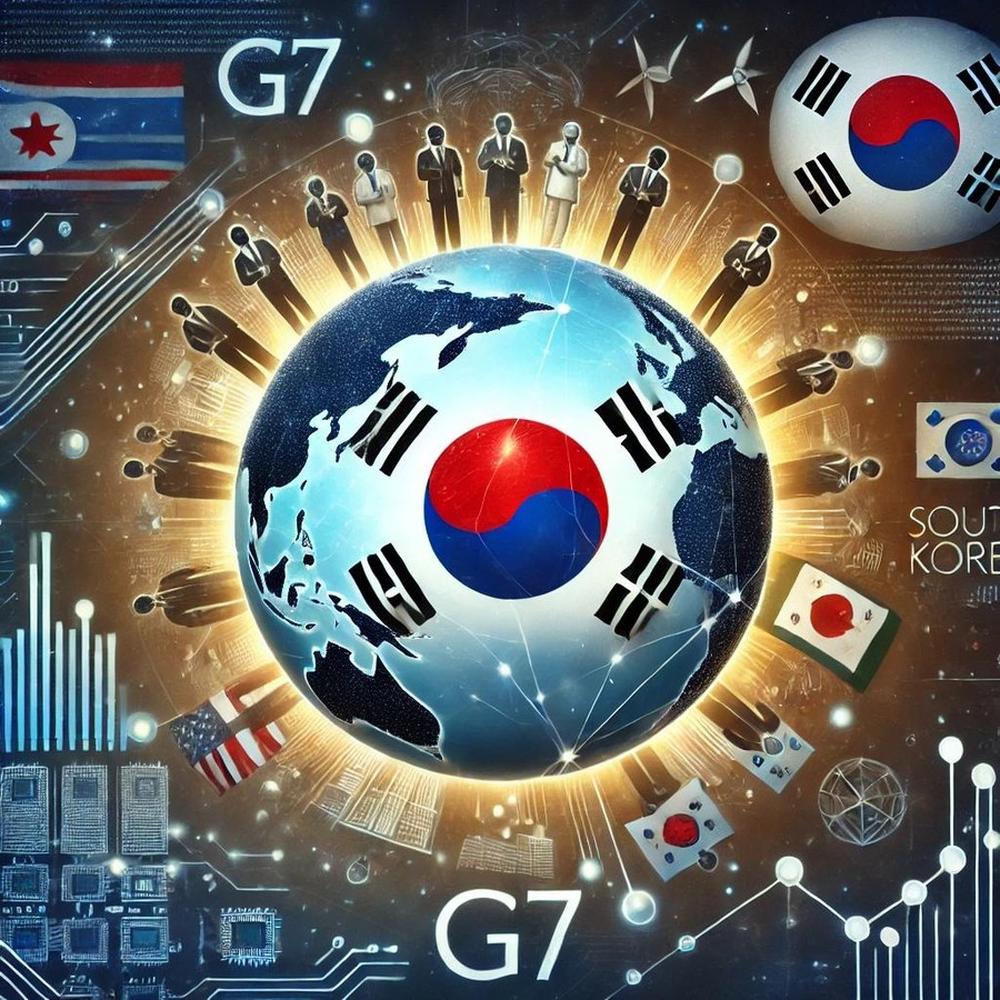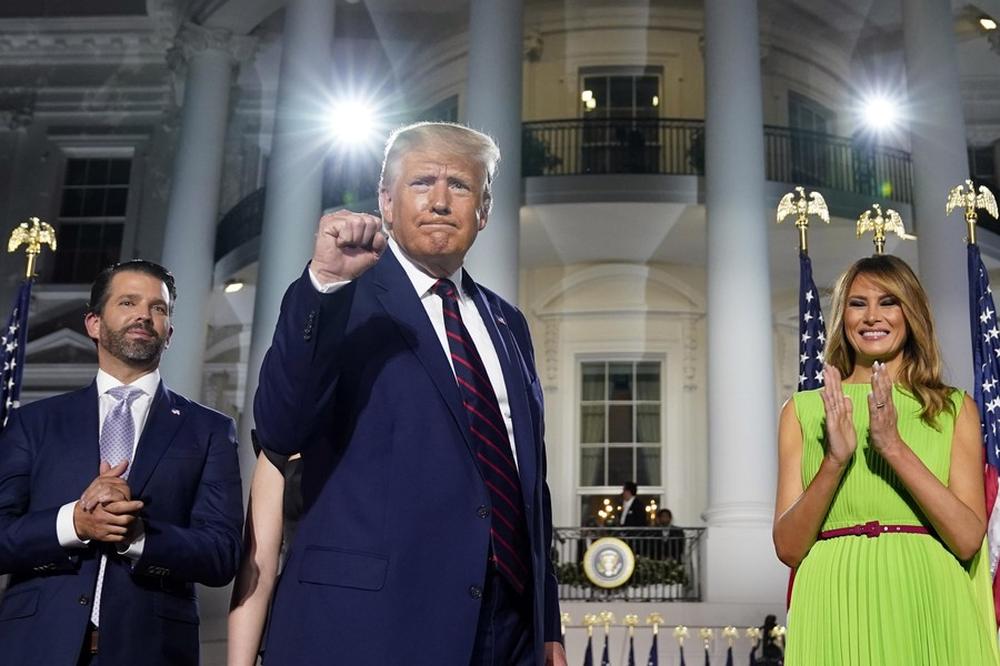- #Economy & Trade
- #US Foreign Policy

* Disclaimer: this paper is a reflection of personal opinion as a researcher, irrespective of the ROK government
----------------------------------------------------------------------------------------------------------------
▶ It seems imperative to dismantle what tariff really means to the Trump administration as a policy tool.
▶ This commentary attempts to make sense of Trumpian use of tariffs by analyzing three different types of possible identities: a) tariff as a punitive tool, b) tariff as an assertive tool, and c) tariff as a reactive tool.
▶ All in all, unpredictability is one discouraging factor, but Korea should still be reminded of the larger rooms and opportunities for negotiation to work on with the incoming US government than with any other previous administrations.
----------------------------------------------------------------------------------------------------------------
Mr. President-elect of the United States is both self-claimed and popularly known as ‘tariff man.’ During his campaign, he has proposed three different types of potential high-level tariffs – universal, reciprocal and Chinese – towards those including the most traded partners of the United States. Based on his outspoken policy priority in reducing trade deficits of the United States, Mr. Trump’s willingness to impose unilateral tariffs towards any ‘wrong-doers’ seems to easily override a deliberation over other qualitative characteristics, like allies for example, of these countries.
In his first term, Mr. Trump has already made clear of his ‘America First’ approach especially on foreign policy. He denies principles of neo-liberalism that buttressed the post-war global economic governance which sustained for almost seven decades, alluding that it was a fallacy that has forgone the hopes of American dream. This viewpoint of alleged United States’ sacrifice for the rest of the world automatically creates hostility towards outsiders across the border. In fact, the traditional US allies ready experienced its unilateral approach in 2018, when the Trump administration during its first term issued a general tariff imposition on steel and aluminum products for national security reasons, based on Section 232 of Trade Expansion Act of 1962. Reminded by their dismay at the time, the US trading partners are voluntarily alarmed with the possibility of immediate imposition of any of Mr. Trump’s tariff proposals upon his inauguration in the second term.
South Korea (ROK) does lie in a tricky position in the Trump’s world. To start from the brighter side, Korea is recorded the largest investor in the United States in 2023, replacing Taiwan from the top.[1] For example, Hyundai Motors, LG Energy Solution and Samsung SDI have announced joint investments with the US companies in EVs and batteries sectors, in the value summing up to tens of trillions of won.[2] This surge of investments to the United States was propelled by tax benefits and subsidy grants offered by the Biden administration, when Korean companies seized opportunities to participate in the ‘friendshoring’ vision to build supply chain resilience. The portion of South Korea’s foreign investment to the United States increased from 18% to 50% from 2019 to 2023, while those to China plummeted from 11% to less than 1% within the identical period.[3] While the local governments in the states where Korean firms have committed for investment cheer upon new employment opportunities and potential economic boost, the hindsight is that this surge in investment would mount to ready existing trade surplus of Korea against the United States.
Meanwhile, Korea’s trade surplus to the United States in 2024 is record high, which is expected to be more than three times compared to that of 2020.[4] Unfortunately, Korea has also been re-nominated this year in the currency watchlist that is published annually by the US Treasury.[5] The fact that foreign direct investment causes expansion in trade deficit is a predictable effect by the definition of balance-of payments. However, the US trading partners hardly believe that the incoming US administration would approve this linkage and therefore provide an exemption to its application of tariff policy. Against such backdrop, the press also reports how those who stand in a similar economic position with Korea, for example, Japan and Germany (EU), are considering a preparation of a so-called ‘purchasing package’ in energy, agriculture and defense sectors to visualize efforts in restoring bilateral trade balance with the United States.[6] The question is, if well prepared, would these US partners including Korea, be able to avoid entanglement into the foreshadowed tariff war?
To answer this question, it seems imperative to dismantle what tariff really means to the Trump administration as a policy tool. This commentary attempts to make sense of Trumpian use of tariffs by analyzing three different types of possible identities: a) tariff as a punitive tool, b) tariff as an assertive tool, and c) tariff as a reactive tool.
Let’s say tariff is a punitive tool. It means that there is a clear ‘wrong-doing’, e.g. keeping a trade surplus against the United States, in which the sender country expects a rapid change in the behavior of the target country. Amidst a spectrum of speculations and full global attention, US President-elect Trump announced in November 26, 2024 that it is his plan to impose 10% of additional tariff on China and 25% of additional tariff on Canada and Mexico.[7] China and Mexico are top 2 and Canada is within top 9, in terms of the amount of trade deficits the US maintains against.[8] If tariff is simply a punitive tool, then why are countries in the top 5 or 7 not in the priority list? Also why impose even higher tariffs for Mexico and Canada than towards China? How much should Korea be worrying about future tariffs?
Another layer of explanation is that tariff is an assertive strategic tool. Mr. Trump is known for his fondness in ‘winning’ transactional negotiations. Any imposition of tariff in the Trump administration does not necessarily mean a dead end in the relationship with the targeted country, but seems to have a function to call out a party to the negotiation table by immediately worsening its position off. In other words, it is rather a sign of initiating a negotiation and it consequently creates a practical challenge to the negotiating party to figure out what the US administration wants as an achievement. While there should be ‘giving’ packages that Korea would have to offer at the table, it should also be keen on the contents of potential ‘taking’ packages. Since ‘America First’ does not necessarily imply economic isolationism of the United States, there would be opportunities where Korea could partner with the United States in rebuilding US’ manufacturing capacity in critical and strategic industries, like shipbuilding for example. The diplomatic challenge is to find a way that can let Mr. Trump feel ‘winning’ in the most effective way during this transactional process. Creating the perfect timing to present offers of resolution and to calmly accept practical partnerships could be the key in dealing with the incoming US government.
Lastly, there is also an idea that tariff imposition is inherently a reaction. Some economists have argued that the US’ 1930 Smoot-Hawley Tariff Act didn’t have a significant role in causing the depression but was a mere reaction to the consequences of spiraling depression at the time.[9] If the use of unilateral tariffs by the United States is primarily a sign of relatively decaying position of the United States in the world economy, then it is up to the partner countries to diplomatically coalesce for a common goal to rebuild global economic resilience based on the alleged prosperity of the United States. Clever ideas to maintain international cooperation among the like-minded countries and persuade Mr. Trump how this would eventually help the United States ‘win’ its game of fierce strategic competition would be critical. Maneuvering ways to pave the road for ‘America First’ approach to practically result in a positive spillover of ‘America Leads’ would be the key diplomatic challenge to soothe and befriend with the second Trump administration.
All in all, unpredictability is one discouraging factor, but Korea should still be reminded of the larger rooms and opportunities for negotiation to work on with the incoming US government than with any other previous administrations. I would like to second Yeo’s (2024) advice for Korea to maintain “cautiou[s] optimis[m]”[10] and hope ROK-U.S. trade relationship to embark on an adventurous yet fruitful partnership in the next four years.
[1] Amanda Chu (Sep. 18, 2024), “South Korea emerges as a top US investor as China tensions escalate”, Financial Times.
[2] Cho, Jae-hyun and Kim, Seo-young (Sep. 20, 2024), “S. Korea becomes top investor in U.S. for the 1st time” The Chosun Daily.
[3] Ibid.
[4] Cha, Dae-un (Oct. 20, 2024), “Trump praises that tariff is the most beautiful word…S.Korea’s trade surplus with the US peaks”, Yonhap News.
[5] Viktoria Dendrinou (Nov. 15, 2024), “US Adds South Korea to Foreign-Exchange Monitoring Watchlist”, Bloomberg.
[6] Noh, Seung-gil (Nov. 10, 2024) “Imports of US oil and gas may increase with Trump re-elected as US President…balancing US trade balance”, E-Today; Matthew P. Goodman (Nov. 21, 2024), “Japan Braces for Trump”, Council on Foreign Relations; Koen Verhelst (Nov. 18, 2024), “Locked and loaded? The EU weapons to fight Trump’s trade war”, Politico; Financial Times (Nov. 10, 2024), “Taiwan considers big US defense purchases as overture to Donald Trump”.
[7] Zoe Richards and Steve Kaopack (Nov. 26, 2024), “Trump says he plans to enact new tariffs on Canada, China and Mexico on his first day in his office”, NBC News.
[8] United States Census Bureau, https://www.census.gov/foreign-trade/statistics/highlights/topyr.html (retrieved on Nov. 24, 2024).
[9] Paul Krugman (Mar. 6, 2016), “The Conscience of a Liberal – The Mitt-Hawley Fallacy”, The New York Times – Opinion.
[10] Andrew Yeo (2024) “Cautiously Optimistic: U.S.-South Korea Ties under Trump 2.0” in How is Trump’s Reelection likely to Affect US Foreign Policy?, Brookings (Nov. 18, 2024).
Dr. Ji Yeong Yoo is Senior Specialist at the Center for Economic Security and Foreign Affairs (CESFA), an in-house research unit of Ministry of Foreign Affairs (MOFA) of the Republic of Korea, and Adjunct Professor at Sogang University. Her research interest lies in understanding the trade-security-technology nexus and its implications towards reform and management of international economic governance. Previously, she was Associate Research Fellow at Science & Technology Policy Institute (STEPI) and Visiting Researcher at Georgetown University Law Center. Her major publications include “Challenges of International Trade Law in Face of Securitization of Supply Chain Policies – Analysis based on US Section 232 Measure and the Relevant WTO Disputes” (2024); Adapting Innovation Policy to Changes in Technology and Trade (co-authored, 2021 and 2022, STEPI); “Restructuring GATT Balance-of-Payments Safeguard in the WTO System” (2019, Journal of World Trade); and “Security Exceptions in the WTO System: Bridge or Bottle-neck for Trade and Security?” (co-authored, 2016, Journal of International Economic Law). She received her M.I.S. and Ph.D. in International Studies from Seoul National University (SNU) and holds a B.Sc. in Economic History with Economics from the London School of Economics and Political Science (LSE).


